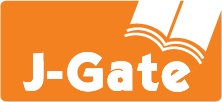Abstract
This paper discusses a framework for ERM with particular emphasis on the life insurance industry. The ERM framework involves eight key features ranging from governance aspects to risk management policy, risk tolerance, own risk and solvency assessment, capital assessment on economic and supervisory basis and continuity analysis. Given that the life insurance industry is a regulated industry the supervisory role is an important feature of the ERM framework. The paper highlights the different stages of ERM maturity starting with a compliance orientation and the highest stage with linkage to strategy and value creation. The insurance industry is currently somewhere in between but there are a lot of dijferences in the maturity of ERM within the industry. Embedding ERM is a significant challenge for the industry with quantification of economic capital, embedding risk management into decision making and dealing with operational risk being some of the primary ones that the life insurance industry is facing. Actuaries have played an important role in risk management of insurance companies for several years and their skills are well suited to take leading roles in ERM. This will however require them to not only possess technical skills but also rise to the challenge of dealing with non-quantifiable risks, change management and communication with senior management and board. ERM combines the three key elements of insurance risk, capital and value. By integrating these elements insurers are able to enhance performance assessment at a more granular level reflecting the risks underlying the business and identifying opportunities of taking more risk to create shareholder value.
Recommended Citation
Maini, Sanchit
(2009)
"Implementing Enterprise Risk Management in Life Insurance,"
Management Dynamics: Vol. 9:
No.
2, Article 2: 9-24
DOI: https://doi.org/10.57198/2583-4932.1164
Available at:
https://managementdynamics.researchcommons.org/journal/vol9/iss2/2





